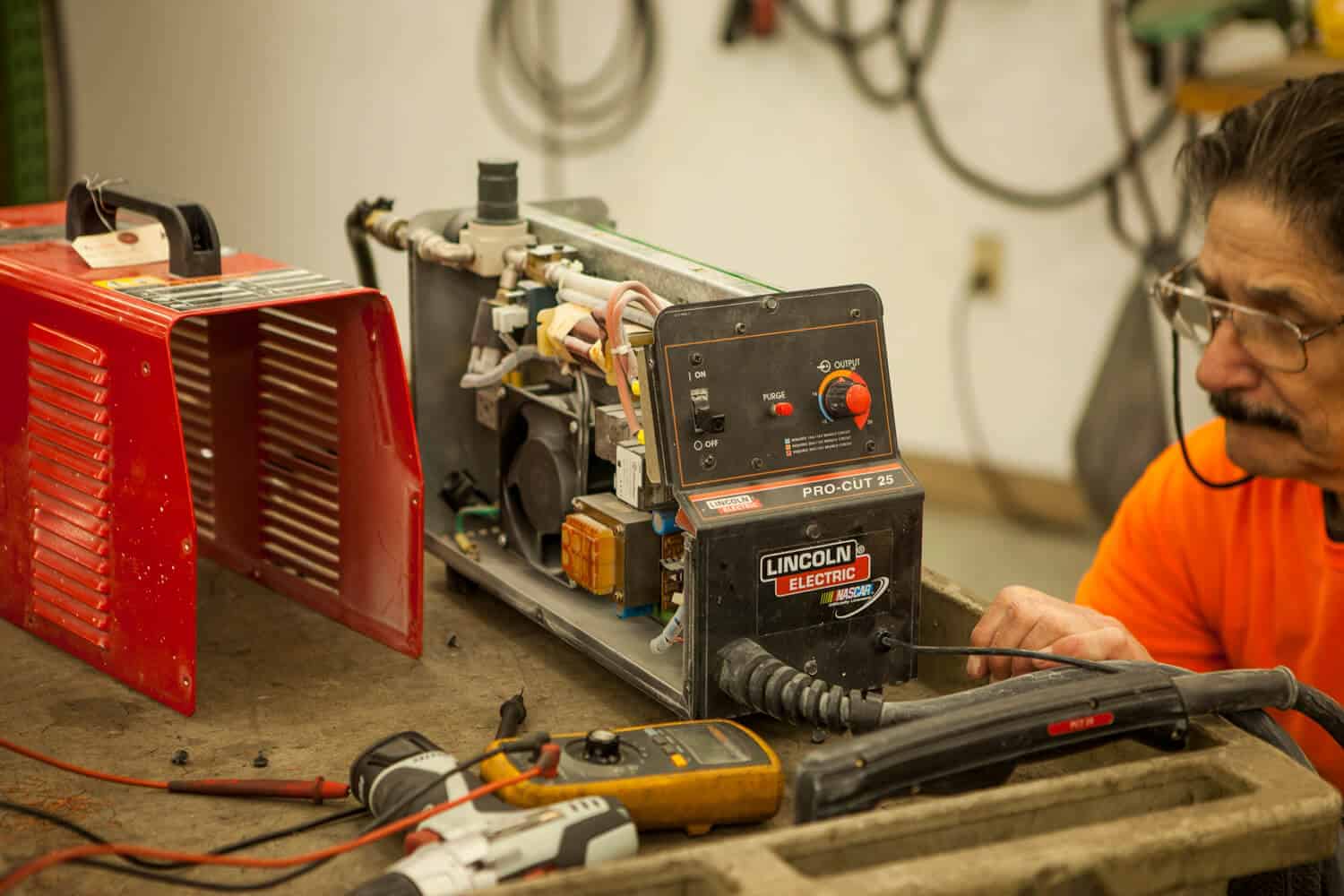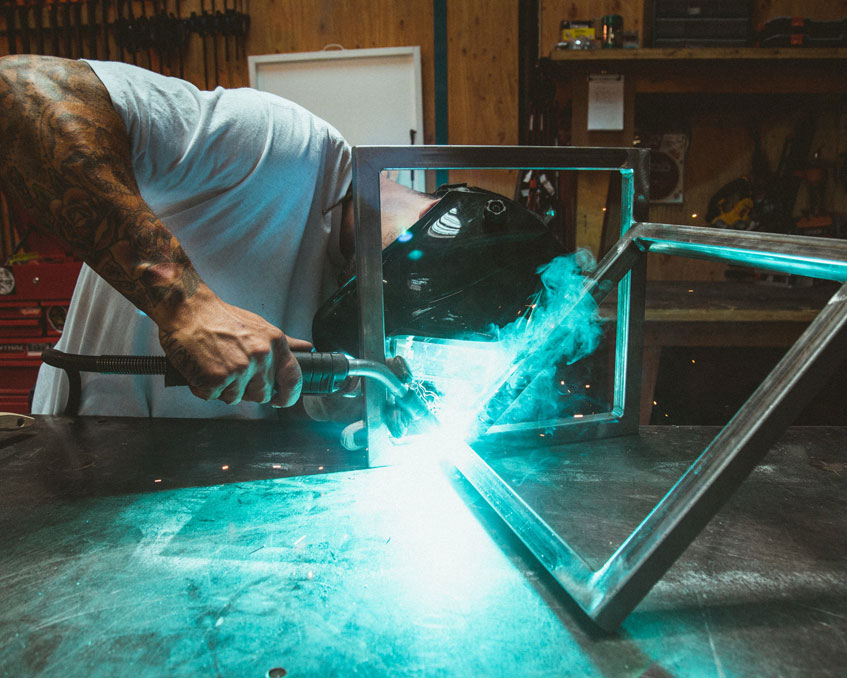Typical Welding Repair Service Issues and Just How to Address Them Effectively
Welding repair work frequently experience a series of issues that can endanger the integrity of the last item. Typical issues include poor penetration, porosity, and misalignment, among others. Each issue provides one-of-a-kind obstacles that need specific approaches for resolution. Comprehending these issues is important for welders aiming to boost their results and skills. This discussion will certainly check out these common welding fixing problems and effective techniques to address them.
Insufficient Penetration
Poor penetration takes place when the weld steel stops working to fully fuse with the base product, leading to weak joints and potential structural failings. This issue commonly originates from inadequate heat input, incorrect electrode angle, or inappropriate welding speed. Welders might experience poor penetration as a result of a mistake of the required parameters for a certain material density or type. Furthermore, contamination on the base material's surface area can prevent effective bonding, exacerbating the problem. To resolve poor infiltration, welders ought to assure proper settings on their equipment and keep a tidy job surface area. Normal inspection of welds is recommended to recognize any shortages early, permitting timely adjustments and the avoidance of jeopardized structural stability in welded settings up.
Porosity
Porosity is a common defect in bonded joints that materializes as small gas bubbles caught within the weld metal. This flaw can endanger the stability of the weld, resulting in minimized toughness and possible failing under stress and anxiety. Montana Mobile Welding and Repair Belgrade Welding. Porosity typically develops from contamination, moisture, or inappropriate welding methods, which allow gases to get away into the molten weld pool. To deal with porosity, welders need to guarantee appropriate surface preparation, maintain a clean workplace, and make use of ideal welding criteria. In addition, picking the appropriate filler product and securing gas can reduce gas entrapment. Normal assessment and testing of welds can aid identify porosity early, assuring prompt restorative actions are taken, thus protecting the quality and reliability of the welded structure
Misalignment
Imbalance in welding can emerge from various factors, consisting of incorrect arrangement and thermal growth. Understanding the origin causes is vital for efficient resolution. Several adjustment strategies are offered to straighten elements and guarantee architectural stability.
Sources of Imbalance
Welding imbalance commonly stems from a variety of underlying problems that can compromise architectural honesty. One main reason is incorrect fit-up of parts before welding, which can cause gaps and irregular surfaces. Variants in thermal expansion during the welding process can likewise lead to distortion, especially if the materials being signed up with have different coefficients of growth. Additionally, inadequate fixturing and securing might fall short to hold parts firmly in position, leading to activity throughout welding. Poorly maintained equipment, including welding devices and tools, might present variances in the weld bead, additional contributing to misalignment. Operator mistake, stemming from insufficient training or experience, can likewise play a significant function in developing misaligned welds.

Improvement Strategies Available
Resolving imbalance efficiently needs a mix of corrective strategies customized to the details issues at hand. One usual approach is the usage of fixtures or jigs to hold parts in the correct position throughout welding, guaranteeing regular alignment. Furthermore, pre-heating the materials can help minimize distortion and improve fit-up. For considerable misalignment, mechanical realignment methods, such as using hydraulic jacks or clamps, can be utilized to remedy the setting before welding. Post-weld warm therapy may also be required to soothe stress and anxieties triggered by misalignment. Cautious assessment and adjustment throughout the setup phase can protect against misalignment concerns from ending up being significant issues, advertising a smoother welding process and boosting general architectural honesty.
Distortion
Distortion is an usual challenge in welding that can occur from different variables, consisting of irregular home heating and air conditioning. Understanding the root causes of distortion is necessary for applying reliable avoidance strategies. Resolving this issue not only enhances architectural integrity yet additionally boosts the total quality of the weld.
Causes of Distortion
When subjected to the extreme warm of welding, products typically undergo changes that can lead to distortion. This sensation primarily develops from thermal development and contraction during the welding process. As the weld location warms up, the product expands; upon cooling, it contracts, which can produce interior tensions. Furthermore, irregular heating throughout a workpiece can worsen these stress and anxieties, causing bending or bending. The sort of product additionally plays a significant duty; metals with varying thermal conductivity and coefficients of development might respond in a different way, resulting in unforeseeable distortions. In addition, inadequate joint style and inadequate fixturing can add to misalignment during welding, raising the chance of distortion. Recognizing these causes is vital for efficient welding fixing and prevention techniques.
Avoidance Techniques
Effective prevention methods for distortion during welding concentrate on managing warmth input and guaranteeing appropriate joint style. Maintaining a consistent warm input aids to reduce thermal expansion and tightening, which can cause distortion. Utilizing methods such as pre-heating the work surface can also minimize the temperature slope, promoting uniform home heating. In addition, choosing appropriate joint layouts, such as T-joints or lap joints, can boost security and Recommended Reading minimize anxiety focus. Carrying out proper fixturing to secure the workpieces in position additionally aids in preserving positioning throughout the welding process. Staggered welding series can distribute warm more evenly, protecting against localized distortion. By applying these techniques, welders can significantly decrease the probability of distortion and improve the total quality of their welds.
Fracturing
Splitting is a common issue experienced in welding repair services, typically resulting from different factors such as inappropriate air conditioning prices, product selection, or insufficient joint prep work. The incident of fractures can greatly jeopardize the stability of the weld, leading to possible failures during procedure. To address this concern, welders must initially examine the origin, making sure that materials work and properly chosen for the certain application. Additionally, regulating the cooling rate during the welding process is important; rapid air conditioning can generate stress and cause breaking. Appropriate joint style and preparation also add to minimizing the danger. Carrying out these methods can improve weld top quality and toughness, inevitably decreasing the likelihood of fracturing in ended up weldments.

Insufficient Fusion
A considerable issue in welding repair work is insufficient blend, which takes place when the weld steel does not properly bond with the base product or previous weld passes - Fabrication. This defect can lead to weaknesses in the joint, potentially endangering the integrity of the welded structure. Variables adding to insufficient combination consist of insufficient heat input, incorrect welding technique, and contamination of the surface areas being signed up with. To resolve this issue effectively, welders must assure correct pre-weld cleansing and surface prep work, along with adjust their welding parameters to achieve adequate infiltration and fusion. Routine examination during the welding procedure can likewise aid recognize insufficient blend early, enabling timely rehabilitative actions to boost the general high quality of the weld
Overheating
While welding spats welding repair services can enhance architectural honesty, overheating presents a considerable challenge that can lead to material degradation. Extreme heat during welding can modify the mechanical residential properties of metals, resulting in decreased strength, boosted brittleness, and bending. This sensation is especially crucial in high-stress applications where architectural reliability is critical. Recognizing overheating can entail visual inspections for discoloration or distortion, in addition to monitoring temperature level during the welding procedure. To alleviate the risks related to overheating, welders ought to employ proper techniques, such as controlling warmth input, adjusting traveling rate, and making use of appropriate filler materials. Additionally, implementing pre- and post-weld warm therapies can aid recover material buildings and improve the total high quality of the repair work, making certain long-lasting performance and safety.
Frequently Asked Inquiries
What Are the Common Indicators of a Welding Problem?

How Can I Evaluate My Welds for Quality?
To check welds for quality, one can utilize visual assessments, ultrasonic testing, and radiographic techniques. Each method guarantees structural honesty, recognizes flaws, and confirms adherence to specified standards, ultimately improving the integrity of the welded joints.
What Security Precautions Should I Take While Welding?
When welding, one ought to prioritize safety by using appropriate personal protective equipment, ensuring correct air flow, protecting combustible materials away, keeping a tidy workspace, and being aware of environments to avoid injuries and accidents.
Can I Repair a Weld Without Remodeling the Entire Joint?
Repairing a weld without remodeling the entire joint is feasible, depending on the damages (Montana Mobile Welding and Repair Belgrade Fabrication). Methods such as grinding, including filler product, or making use of a welding process can properly attend to specific problems while preserving the bordering framework
What Equipment Are Necessary for Effective Welding Fixes?
Vital devices for effective welding fixings include a welding maker, cord brush, grinder, safety equipment, clamps, and filler products. Each tool plays an important function in ensuring quality and safety during the repair procedure. Porosity typically emerges from contamination, wetness, or inappropriate welding methods, which allow gases to get away into the molten weld pool. Inadequately maintained devices, consisting of welding devices and devices, may introduce incongruities in the weld grain, further contributing to misalignment. When subjected to the intense warm of welding, products frequently undertake modifications that can lead to distortion. Breaking is a typical problem run into in welding fixings, typically resulting from different variables such as inappropriate cooling rates, product selection, or inadequate joint preparation. A considerable problem in welding repair services is incomplete combination, which happens when the weld metal does not sufficiently bond with the base material or previous weld passes.